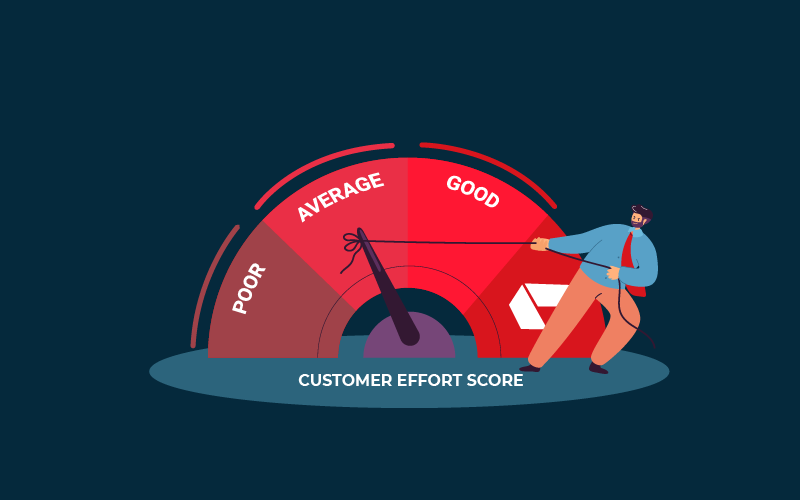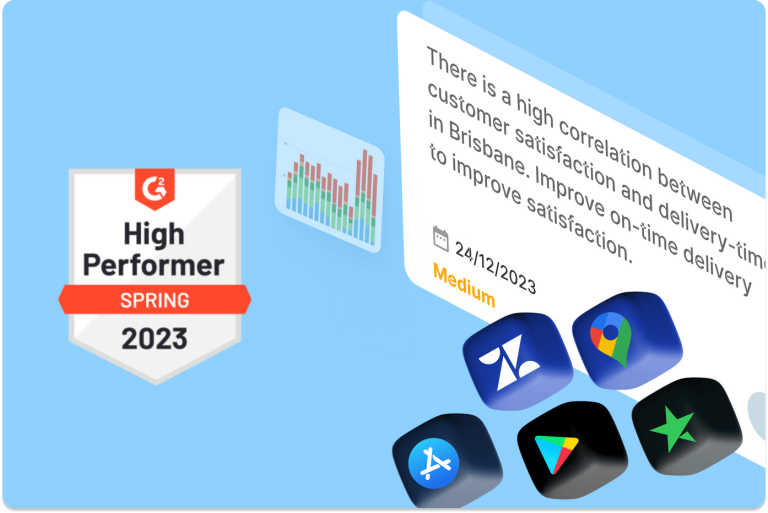
Customer experience (CX) is an essential aspect of running a business, and it has become increasingly important to understand how customers perceive the experience. In addition to the Net Promoter Score (NPS), there are other ways to measure CX, such as the Customer Effort Score (CES).
In this article, we will provide a complete guide to the Customer Effort Score and how it can help businesses improve their customer experience.
Customer Effort Score (CES) is a metric used to measure the ease of doing business with a company. It measures the level of effort a customer has to put into resolving an issue, making a purchase, or getting an answer to a question. The higher the score, the less effort a customer has to put in, which typically results in higher levels of customer satisfaction and loyalty.
CES is an excellent system to measure customer effort. Measuring customer effort helps you identify bottlenecks in your customer journey and helps you make effective decisions to achieve a higher customer satisfaction score. The score gives you actionable insights necessary for improving overall customer experience as well as customer retention.
CES can be used in various situations, such as after a customer service interaction when making a purchase, or completing a survey. It is a valuable tool for identifying areas where customers are experiencing difficulties and can be used to improve the overall customer experience.
To measure CES, a customer survey can be conducted using a scale of 1 to 7, with 1 being “very difficult” and 7 being “very easy. The survey typically includes a single question, such as “How easy was it to solve your issue today?” or “How easy was it to make a purchase?” The score is then calculated by averaging the responses of all customers who completed the survey.
The CES formula is straightforward. It is calculated by subtracting the percentage of customers who responded with a score of 1, 2, or 3 from the percentage of customers who responded with a score of 5, 6, or 7. The resulting score ranges from -100 to +100.
There are two types of CES surveys: transactional and relationship. Transactional surveys are conducted after a specific interaction, such as customer service or making a purchase. Relationship surveys are conducted periodically, such as annually or quarterly, and provide a more comprehensive overview of the overall customer experience.
Advantages of CES include its simplicity and ease of use, as well as its ability to identify areas of the customer experience that require improvement. However, it may not provide a complete picture of the overall customer experience and should be used in conjunction with other metrics, such as NPS.
To improve your CES, businesses should focus on reducing customer effort. This can be achieved through streamlining processes, providing clear instructions, and offering self-service options. By improving the customer experience and reducing customer effort, businesses can improve their CES score and increase customer satisfaction.
CES and NPS are both metrics used to measure customer experience, but they focus on different aspects. NPS measures customer loyalty and satisfaction, while CES measures the ease of doing business with a company. Both metrics are valuable and should be used together to provide a more comprehensive overview of the customer experience.
CES and NPS can be used together by measuring both metrics and comparing the results. By doing so, businesses can gain insights into areas of the customer experience where they are excelling and areas that need improvement. This information can then be used to make targeted improvements to the customer experience, resulting in higher levels of customer satisfaction, loyalty and ease of doing business
The Customer Effort Score (CES) is an essential metric for businesses looking to improve their customer experience. By measuring the level of effort required by customers to interact with a business, businesses can identify areas for improvement and make targeted changes that lead to higher levels of customer satisfaction and loyalty. While CES should be used in conjunction with other metrics, such as NPS, it provides valuable insights into the overall customer experience and should not be overlooked by businesses looking to improve their customer experience.
Benchmark your CES today with our free CES benchmarking calculator to see how you stack up against your competition.
Unify omnichannel Voice-of-Customer data, analyse it at scale using AI and extract insights to improve performance metrics
✔Free forever ✔ No credit card needed ✔ Reduce Churn

Don’t Let Your Competitors Understand Your Customers Better Than You
Don’t miss out. Try our 30-day Free Professional Trial.
